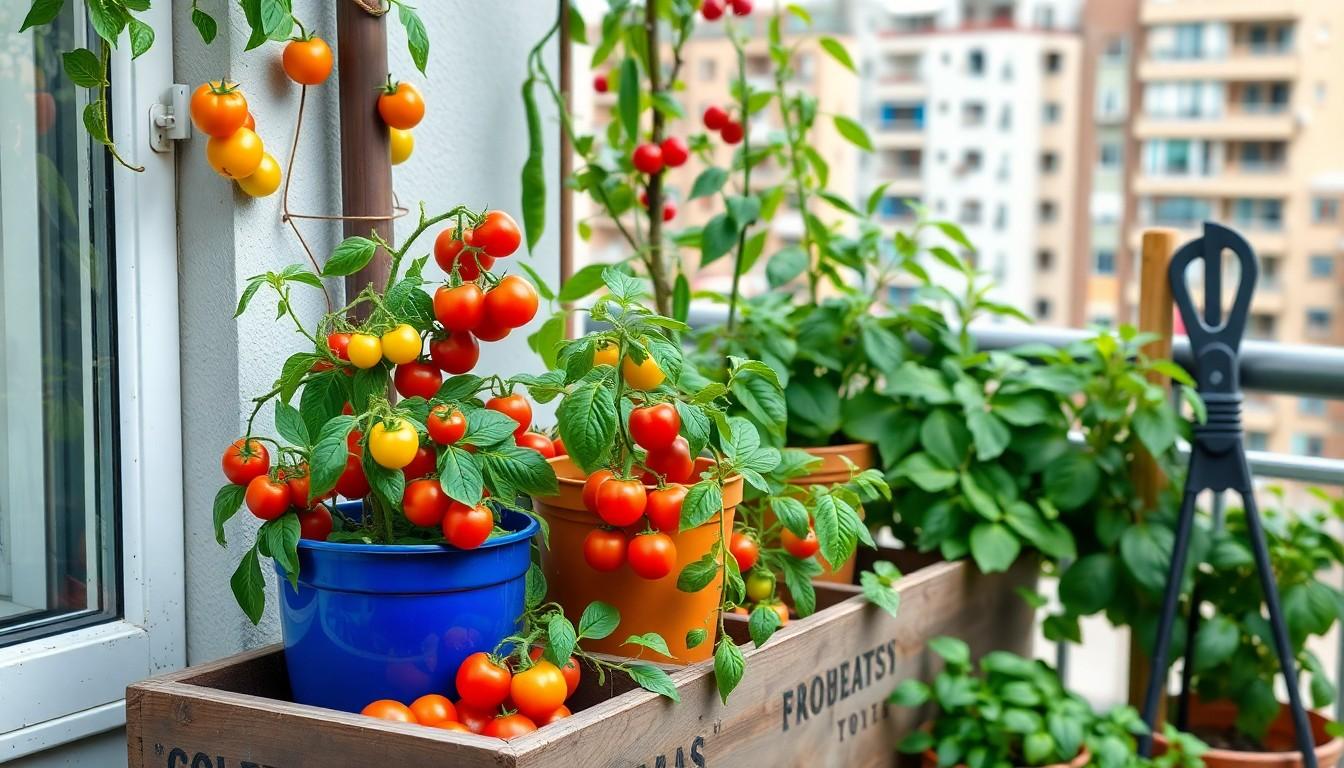In a world where square footage seems to shrink faster than a wool sweater in hot water, small space gardening emerges as a breath of fresh air—or should we say, fresh basil? Whether it’s a cozy balcony or a tiny kitchen window, the potential for lush greenery and homegrown veggies is just waiting to be unleashed. Who knew that a few pots could turn a cramped corner into a vibrant oasis?
Small Space Gardening
Small space gardening transforms compact areas into flourishing gardens. This practice allows anyone to cultivate plants, regardless of space limitations.
Definition of Small Space Gardening
Small space gardening involves growing plants in confined areas like balconies, patios, or window sills. Container gardening or vertical gardening often characterizes this approach. It maximizes available space by using various planting techniques and garden furniture. Herbs, vegetables, and decorative plants thrive in these environments.
Benefits of Small Space Gardening
Small space gardening provides numerous advantages for urban dwellers. Access to fresh produce improves nutrition, while maintaining greenery enhances mental well-being. Productivity increases with the use of vertical structures and multi-tiered planters. Additionally, small spaces require less upkeep, making gardening accessible for busy individuals. Environmental benefits include promoting biodiversity and reducing carbon footprints. Overall, small space gardening yields sustainability and satisfaction.
Planning Your Small Space Garden

Planning a small space garden involves thoughtful consideration of how to maximize every square inch. This ensures a productive and enjoyable gardening experience.
Assessing Available Space
Identify each area available for gardening, whether it’s a balcony, patio, or kitchen window. Measure dimensions carefully, noting sunlight exposure and wind patterns. Evaluate vertical spaces; walls or fences can support climbing plants. Determine accessibility to ensure easy maintenance and harvesting. Consider using shelves or racks to create additional planting surfaces. Analyze soil quality in containers; this impacts plant growth significantly. Prioritize space for essential gardening tools and supplies for convenience.
Choosing the Right Plants
Selecting suitable plants for small spaces enhances garden success. Opt for compact varieties of vegetables, such as cherry tomatoes or mini peppers. Herbs like basil and parsley thrive in pots and require minimal space. Consider edible flowers for added beauty and culinary use. Prioritize plants that offer vertical growth, including peas or cucumbers, maximizing height rather than width. Choose companion plants to improve health and yield, like planting marigolds with vegetables. Explore native species for resilience and sustainability in local climates.
Essential Tools for Small Space Gardening
Using the right tools can significantly enhance the small space gardening experience. Various instruments aid in maximizing efficiency and ensuring plant health.
Must-Have Gardening Tools
Hand trowels serve as essential tools for digging and planting in tight spots. Pruners allow for effective trimming and maintenance of plants, supporting growth. A watering can is vital for providing sufficient moisture to container gardens. Garden gloves protect hands while working with soil and plants, preventing injuries and promoting a comfortable experience. A soil moisture meter assists in assessing hydration levels, ensuring optimal watering practices. Additionally, a small rake helps in leveling soil and removing debris efficiently.
Container Options for Small Spaces
Containers come in various styles, making them suitable for diverse environments. Traditional pots provide an aesthetic touch while housing plants effectively. Vertical planters, such as wall-mounted options, optimize limited floor space and add visual interest. Hanging baskets offer creative ways to display flowers or herbs, taking advantage of overhead areas. Grow bags are lightweight and portable, providing excellent drainage and aeration. Additionally, self-watering containers ensure consistent moisture levels, reducing maintenance efforts. The selection of containers directly influences the overall success of small space gardening efforts.
Techniques for Successful Small Space Gardening
Small space gardening thrives on creativity and efficiency. Several techniques maximize limited areas while ensuring productivity and aesthetic appeal.
Vertical Gardening
Vertical gardening optimizes limited space by utilizing walls and vertical structures. Trellises and wall planters provide support for climbing plants like peas, cucumbers, and beans. Consider using vertical shelves for herbs, allowing easy access. Potted plants can also be stacked to create a layered effect. This technique not only saves ground space but also adds visual interest, turning ordinary areas into lush retreats.
Square Foot Gardening
Square foot gardening divides space into manageable sections, offering an organized approach. Allocate a square foot for each type of plant, enhancing diversity in small areas. This method promotes higher yields by maximizing planting density while reducing weeding time. Utilize raised beds to facilitate access and improve soil quality. Compact varieties such as cherry tomatoes and mini peppers thrive in this setup, allowing for a productive and enjoyable gardening experience.
life and beauty
Small space gardening opens up a world of possibilities for urban dwellers and anyone with limited outdoor areas. By embracing creative techniques and selecting the right plants, individuals can cultivate lush gardens that thrive in confined spaces. The benefits extend beyond just aesthetics; fresh produce and herbs enhance culinary experiences while fostering a deeper connection with nature.
With the right tools and a thoughtful approach to planning, anyone can transform their small space into a productive oasis. This practice not only nurtures personal well-being but also contributes to environmental sustainability. Small space gardening proves that even the most modest areas can flourish with life and beauty.




